From Mozambique to Scotland to Honduras, Simão Zacarias discusses his unique journey of hopeful discovery
University of Stirling Ph.D. student Simão Zaharias next month will travel to Isla del Tigre (Tiger Island), Honduras, to begin documenting evidence showing the benefits of producing shrimp without the traditional practice of eyestalk ablation to induce spawning.
Zacarias, who hails from Beira, Mozambique, was preparing for his trip at the university’s laboratories in Scotland last week when he told the Advocate that the collaborative team he’s become a huge part of believes there is a viable alternative to cutting the eyestalk of broodstock shrimp in order to produce commercial-scale volumes.
The method he’ll be studying intensively was developed over the past few years by Central and South American shrimp producer Seajoy. Those involved say the global shrimp farming industry stands to benefit from a thorough evaluation of this innovative and non-invasive approach to breeding.
I’m excited to do this job and get results that will make a revolution in the shrimp hatchery industry.
Zacarias, 26, refers to the process as “pre-maturation conditioning,” and says it could be a breakthrough in animal welfare practices for the aquaculture industry.
“We have much potential with this hatchery practice, which will help the shrimp industry to produce shrimp without using eyestalk-ablated broodstock,” Zacarias said.
Zacarias’ trials at Seajoy’s farms in Honduras are a collaboration between Seajoy, its U.K.-based supply partner Lyons Seafood, and the Global Aquaculture Alliance.
The research will include evaluations of broodstock reproductive performance, offspring quality, growth rates and biochemical composition of free-eyestalk and eyestalk-ablated Pacific white shrimp (Litopenaeus vannamei).
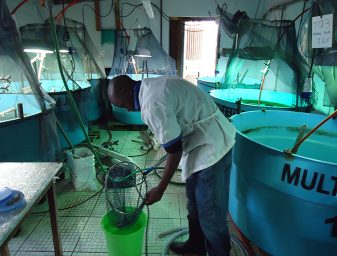
According to Bradford Price, VP of operations and sales at Seajoy, the company began separating ablated and non-ablated female broodstock at its larvae production laboratories two years ago and came away impressed with the results of the shrimp from non-ablated females, saying they resulted in a “better animal.”
This year, 100 percent of Seajoy’s shrimp produced in Honduras and Nicaragua are ablation-free; the product is not yet on the market.
“Seajoy uses the management practice now. But we thought that more investigation and research was needed to further understand the management process of the broodstock, which [results in] more fingerlings produced with a high number of broodstock. What is behind this?” asked Zacarias.
“If we don’t look at the pre-maturation conditioning, it’ll be difficult for us to explain what increases the numbers of females,” he added.
At 10 months of age, the non-ablated shrimp populations will transition to a two-month period of external-manipulation conditioning – expected to commence in October – which includes controlling the water temperature, diet and the animals’ exposure to light, among other factors and tank characteristics. The experiments will continue through much of 2017.
The economic component of this work is key. The hatchery analysis seeks to understand the costs and income potentials of producing shrimp postlarvae with the external-manipulation tools versus those produced with ablation, which is a surgical manipulation of a shrimp’s endocrine system that induces the animal to produce 10 to 20 times more eggs.
The process has been a standard practice in shrimp farming for the past quarter-century, but emerged recently as an animal welfare concern among U.K. consumers, despite evidence that the procedure has not been shown to stress the animals, which return to normal behavior soon after. Other alternatives to ablation involve injecting hormones, which Zacarias said can cause stress to the animals and are therefore impractical.
“Welfare is very important. According to my professors the cost will increase but the outcome and the return on the investment will be worth it. The number of the offspring and survivors and other parameters will be worth it to be producing using non-ablated shrimp,” said Zacarias.
“I’m excited to do this job and get results that will make a revolution in the shrimp hatchery industry.”
Author
-

James Wright
Editorial Manager
Global Aquaculture Alliance
Portsmouth, NH, USA[103,114,111,46,101,99,110,97,105,108,108,97,97,103,64,116,104,103,105,114,119,46,115,101,109,97,106]
Related Posts

Innovation & Investment
Aquaculture Exchange: David Little, University of Stirling
David Little, professor at the University of Stirling in Scotland, tells the Advocate about the rapid evolution of the aquaculture industry in Southeast Asia — where he made his home for many years — and discusses the role of academia in ushering in new eras of innovation.
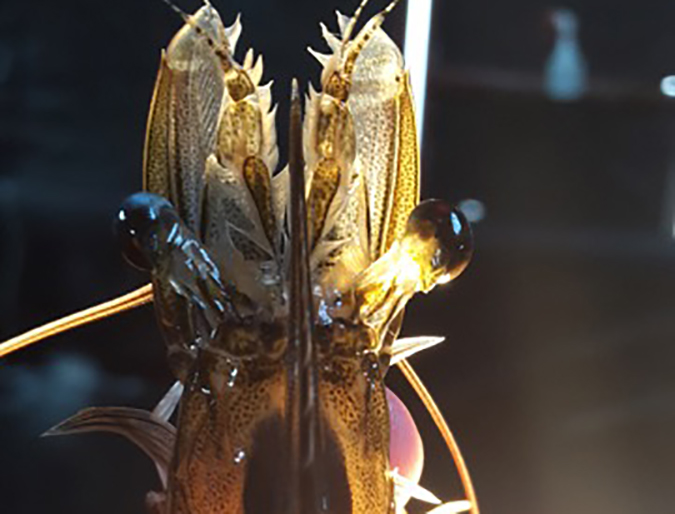
Health & Welfare
Seajoy’s ablation-free shrimp answers emerging welfare concern
Removing the eyestalk of broodstock female shrimp aided in the explosive growth of commercial-scale aquaculture. An undertaking by a Central American shrimp farmer has shown that producing shrimp without ablation can ease animal welfare worries without the feared drop in production.
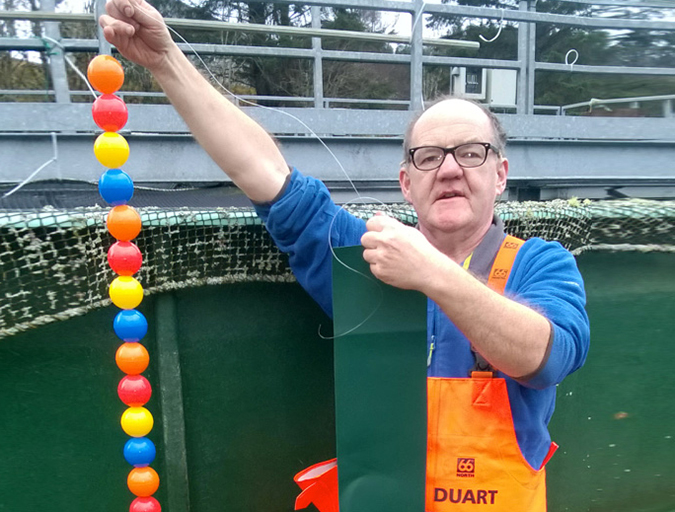
Health & Welfare
Time to play: Farmed fish respond to environment enrichment
Animal welfare on fish farms encompasses health, diet, water quality, husbandry, handling and slaughter. Add environment enrichment to the list, like a Scottish salmon company, which keeps its fish healthy by keeping them busy.
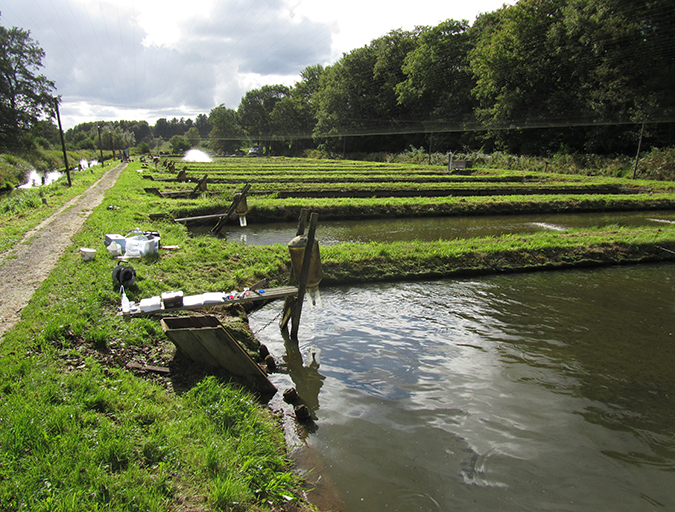
Health & Welfare
Linking water treatment practices and fish welfare
Quantification of fish behavior is complex and depends on the experimental setup and biomarkers applied. A simple method was tested to quantify locomotor behavior to evaluate the effects of simulated water treatment scenarios using peracetic acid.

